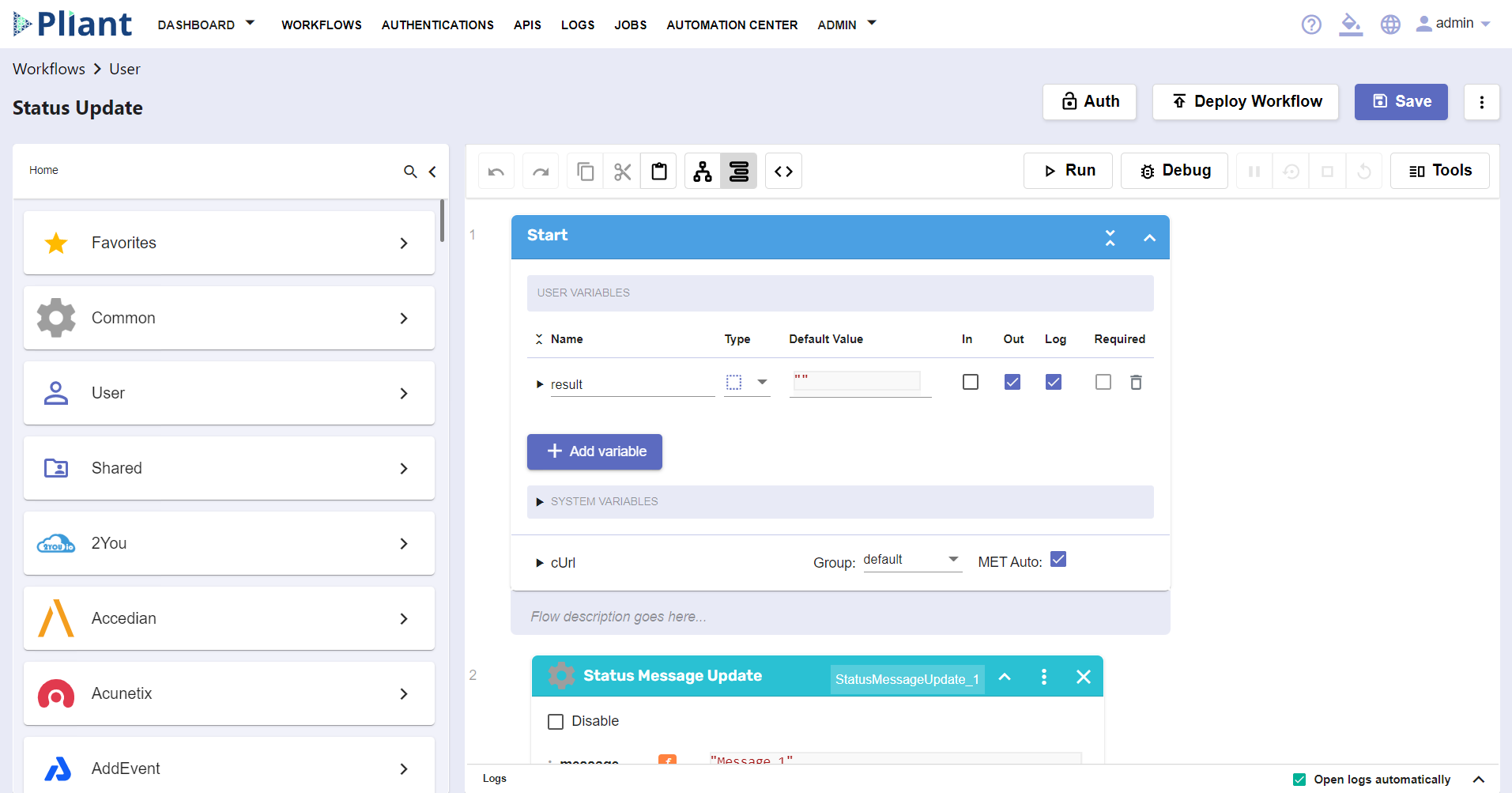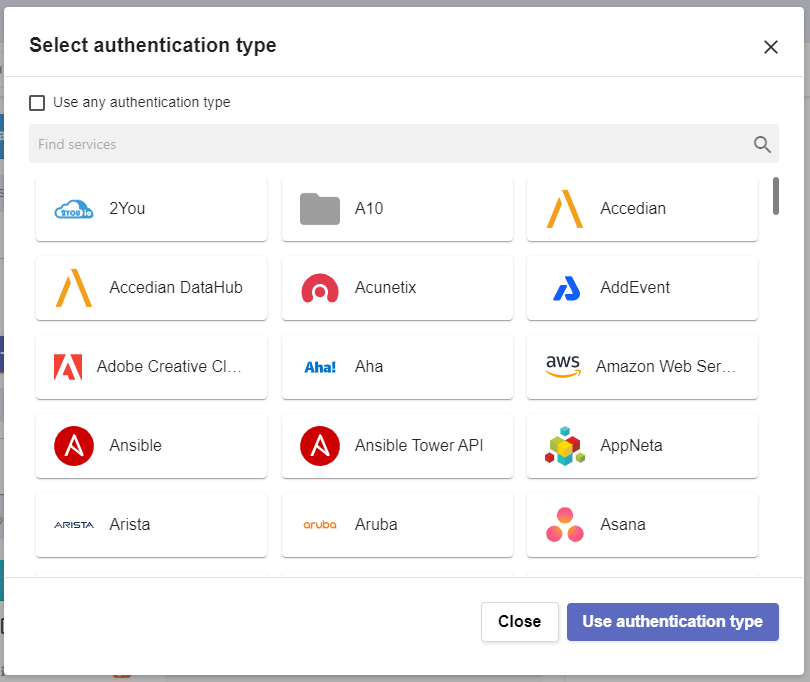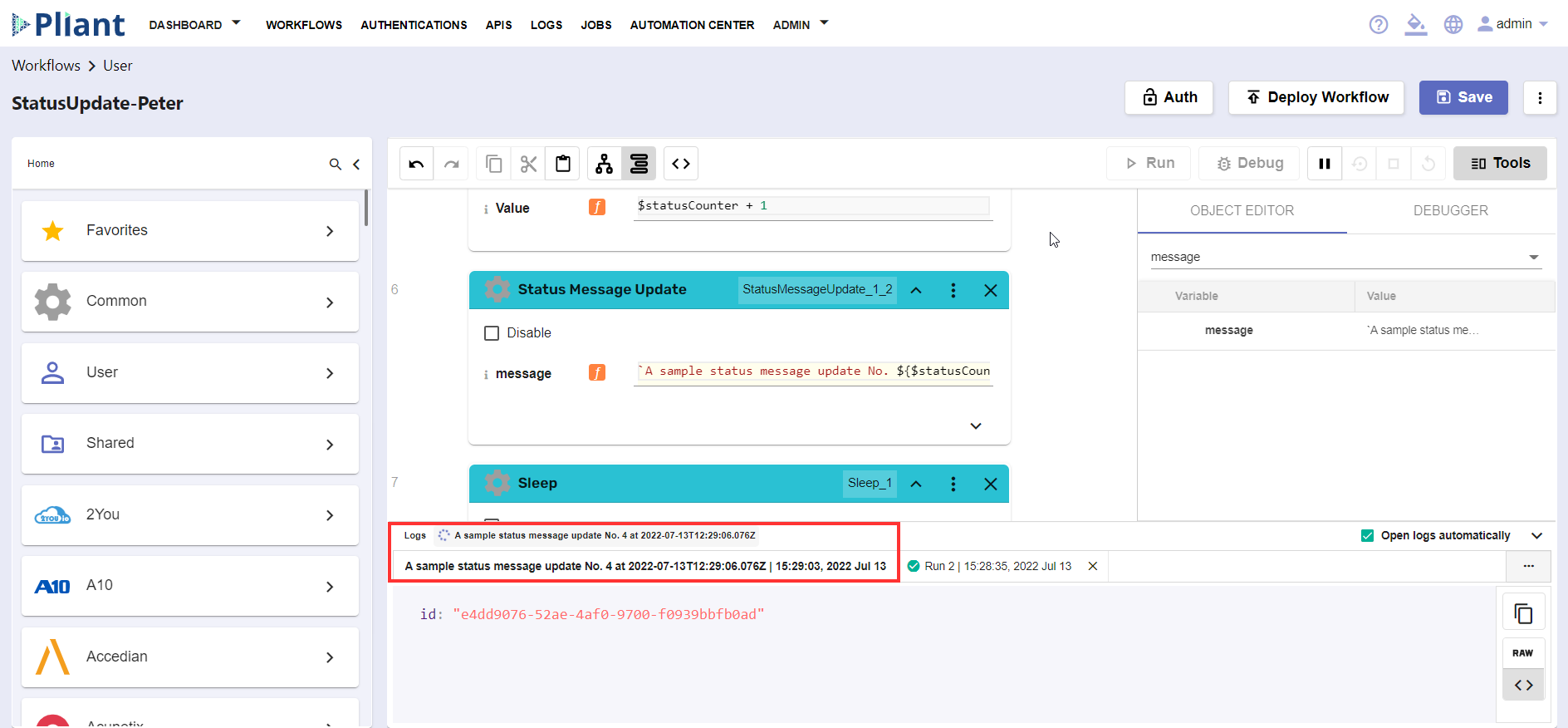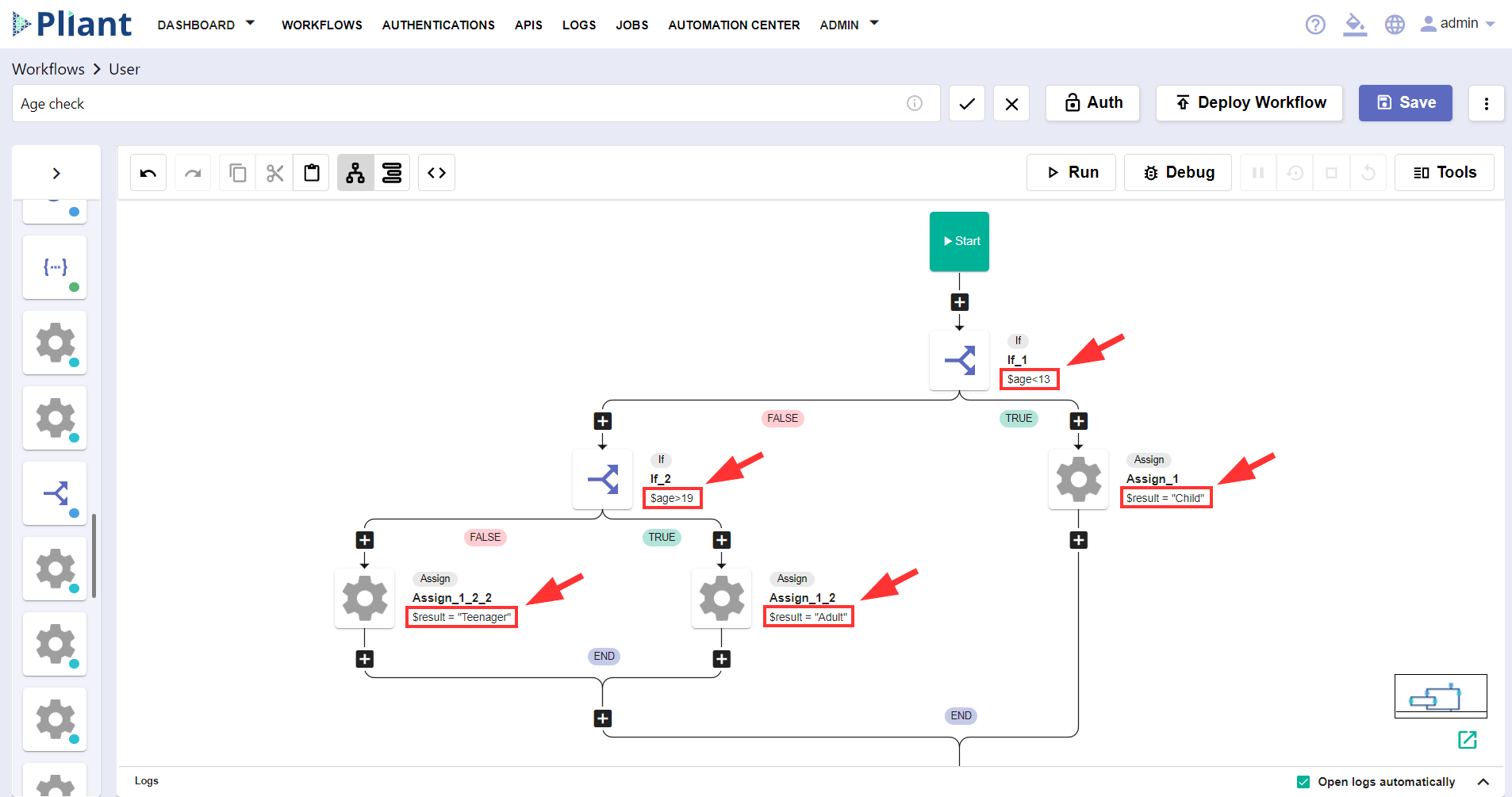Release Notes for 2022.5
Available on: 27 July 2022
Component Details:
addon-ansible:1.9.0, addon-mqws:1.3.0, addon-napalm:3.1.1, addon-textfsm:1.4.0, addon-themes:1.43.0, addon-trigger:1.36.0, pliant-api-radius:1.5.0, pliant-api:1.120.0, pliant-app-gateway:1.15.0, pliant-compiler:1.20.0, pliant-db-migration:1.31.1, pliant-flow-converter:1.4.0, pliant-front:1.161.14, pliant-integrations:2.86.0, pliant-proxy:1.26.0, pliant-scheduler:1.16.0, pliant-versioning:1.17.0, pliant-worker-nodejs-config:1.17.0, pliant-worker-nodejs-remote:1.32.0, pliant-worker-nodejs:1.91.0
Release notes - Pliant - Version 2022.5
Supported Browsers and OS
Supported OS:
Ubuntu 18.04, 20.04
Red Hat Enterprise Linux 8
Supported Browsers:
Google Chrome
Microsoft Edge
Mozilla Firefox
Apple Safari
Supported Screen Resolutions:
FullHD (1920x1080) or higher, with browser zoom level at 100%
Key features and improvements
Automation Center
Automation Center is a prominent feature that provides an easy way to organize and run your workflows from an attractive dashboard. It is intended for users focused on using/running workflows vs. creating, building, and editing workflows. It is a separate dashboard intended for manual execution of workflows, complete with access control.
You can have several panels - an easy way to organize and sort your workflows into categories:
Each panel contains customized cards (called tiles) that allow you to easily run a workflow by clicking on it without the need to go through the Workflow editor. You can add, edit, remove, and change images, names and descriptions, as well as rearrange tiles freely:
You can customize access permissions to the panels via the new Automation Center tab under the Roles Management page:
See the documentation for full information about this great feature.
Workflow Editor, Authentications, and System Configuration restyle
A new design has been applied to a variety of pages in Pliant. There is a brand new facelift for the Workflow Editor, with the palette now on the left side, as well as more convenient buttons and a simplified user interface:
The new design has also been applied to the Authentications screen:
Last but not least, all pages under the System Configuration menu have also been restyled - see below (RADIUS VSA Authorization) for a screenshot.
Authentication Key as variable type
A new variable type authentication is now available in the start block, so you can easily pass authentications as parameters and variables between different workflows:
For each authentication variable, you can decide whether to assign a particular service or use any integration block with it:
Custom status message updates for long-running workflows
Workflows are now able to get a custom status update that is shown during the execution. There is also a new Status Message Update block in the Common integrations package that allows you to set your custom messages, so you can more easily identify different phases and stages of your workflow executions:
Real values displayed in the Flow Layout
In the Flow Layout, you can now see the values of the blocks, so the logic behind the workflow can be easily understood:
A minor rework on the minimap has also been made.
RADIUS VSA Authorization
Similar to the SAML mapping, Pliant now supports RADIUS Authorization via Vendor Supported Attributes. Users can obtain mapped roles directly from Identity Provider. The feature needs to be enabled via Admin / External Login Providers / RADIUS / Use Identity Provider Mapped Roles:
Other UX and under-the-hood improvements
When the user selects the Save As option, they can now change the name and select the folder where the workflow will be saved.
Required fields are now shown in bold for even easier distinguishing.
You can now log API requests for deployed APIs and investigate how it behaves further. To access this, you need to turn on Enable API request logging checkbox in the API’s settings.
The authentication schema name is displayed when trying to delete it while it is still referenced (usually when uploading a new integration version).
Bug-fixes and stability improvements










